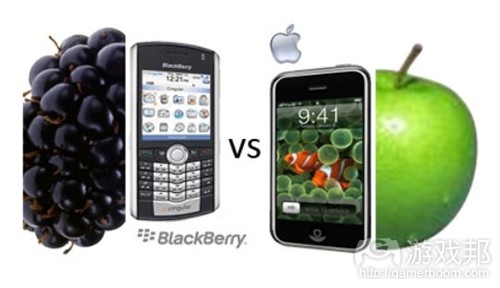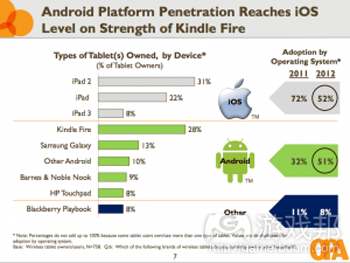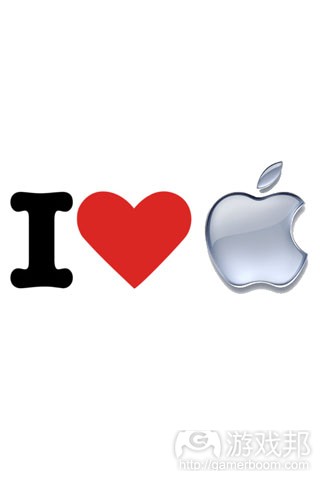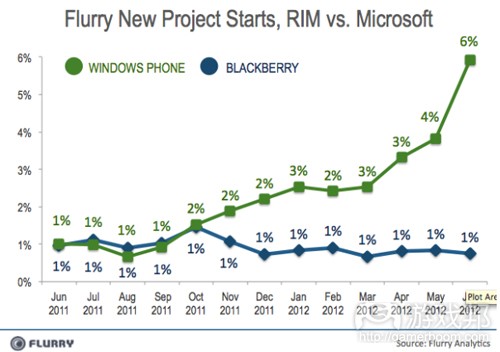每日观察:关注Android平板电脑在美国使用率(6.19)
1)IDC最新数据显示,2012年第一季度智能手机出货量达1.446亿部,2011年第一季度至今年同期增幅达41%,但仅有三星和索尼在在2011年第四季度的市场需求出现增长。
诺基亚Symbian手机销量则下滑40%(游戏邦注:据ABI高级分析师Michael Morgan所称,诺基亚Windows Phone手机业务今年需增长5000%方能补足Symbian出货量的缺口),RIM在第四季度的出货量也下挫20%。
北美及西欧智能手机普及率已达50%,IDC认为移动设备制造商需瞄准中国等新兴市场,中国已成为全球最大智能手机市场,其出货量增幅达80%。
苹果和三星占据55%的智能手机市场份额,但二者所获利润占比高达90%。
2) Online Publishers Association(简称OPA)最近报告显示,尽管iPad在美国平板电脑市场影响力最大,但从使用率上看,Android设备与iPad已经不相上下(游戏邦注:其调查样本是2540名介于8-64岁的网络用户)。
2011年iPad用户占比72%,超过了占比32%的Android平板电脑用户,而今年两者的市场份额相对持平,分别占比52%与51%,这一点主要归功于亚马逊Kindle Fire。
报告指出美国用户对平板电脑使用率发展迅速,目前用户平均每周使用平板电脑长达13.9小时,还有74%用户每天都使用平板电脑,预计到2013年将有47%用户拥有平板电脑(2011年的这一比例仅为11%),而2007年面世的iPhone历时5年才成为多数美国用户选择的智能手机。
Kindle Fire目前是最受欢迎的Android平板电脑,占据28%的美国平板电脑市场份额,超过三星平板设备的两倍。
94%用户使用平板电脑“获取内容和信息”,有61%用户为这些内容付费。67%受访者使用平板电脑上网,66%使用该设备查收邮件。观看视频内容的平板电脑用户占比54%,查看天气信息的用户占比49%,而查看全国新闻的用户仅占比37%。
应用程序也是平板电脑用户消费的主要内容,70%用户“保留并经常使用”自己下载的至少半数应用,预计用户今年购买应用的投入将达26亿美元,远超2011年的14亿美元。
有38%受访者表示,自己在平板电脑上看到产品广告后会采取购买行动,29%用户看到广告后会搜索该产品,23%用户会点击产品广告。但需注意的是,目前暂时无法确定用户是否仅出于新鲜感而点击广告,以及平板电脑市场发展成熟时是否仍将保持这种趋势(例如,在线广告点击率已出现逐年下降的情况,这可能与用户已经对广告麻木有关)。
3)Gazelle最近针对1000名用户的调查结果显示,有18%用户表示自己宁可一周不洗澡也不能没有iPhone,有65%受访者表示自己宁愿不能上Facebook也不能没有iPhone,仅有1%受访者称自己不能没有Facebook。
85%用户表示自己上卫生间时也会带上iPhone,40%受访者称最希望看到下一代iPhone采用更大的屏幕。
4)移动交互公司tyntec最近调查报告指出,有三分之二年龄介于16-24岁的英国用户每天至少通过手机访问一次Facebook、Twitter等社交网络,而美国用户的这一比例仅为37%。
与此同时,15%英国人每天至少访问五次社交网络,但美国用户的这一比例仅为8%。
5)谷歌日前宣布Google Play添加新功能“Collectibles Week”,向用户限时供应精选Android游戏中的特殊道具。
例如,《The Sims FreePlay》游戏向用户供应独特的家具包裹,而《Tiny Village》玩家则可在本周免费获取一个Emerald Bugdroid雕像。目前有25款游戏参与了这项推广活动,但美国与非美国用户接触到的推广游戏略有不同。
6)Flurry最近监测数据显示,开发者针对Windows Phone平台开发的项目在过去12个月中增长了600%,在目前Flurry所监测到的所有新项目中占比6%。
今年第二季度Windows Phone应用开发项目在Flurry平台所占比例从去年同期的1%增长至目前的4%,但仍远落后于占比67%的iOS项目,以及占比28%的Android项目。
Windows Phone是过去一年中增幅最大的平台,增长率达521%。排名第二的是Android,增长率为82%,iOS增长率为66%。
Distimo曾在四月份报告指出,Windows Phone Marketplace是发展最迅速的应用商店,comScore在本月初也报告称Windows Phone手机市场份额已增长至4%。(本文为游戏邦/gamerboom.com编译,拒绝任何不保留版权的转载,如需转载请联系:游戏邦)
1)WinPho needs to grow 5,000 per cent in 2012 to turn around Symbian
by Zen Terrelonge
Samsung and Sony among the only smartphone OEMs to achieve growth in Q1.
New IDC data says smartphone shipments increased 41 per cent year-on-year between Q1 2011 and Q1 2012, reaching 144.6 million.
However, most OEMs have failed to benefit from the boom, with Samsung and Sony the only two firms to achieve an increase in demand on Q4.
Nokia has a huge mountain to climb, with sales of its Symbian-powered devices falling 40 per cent. ABI senior analyst Michael Morgan said: “At this point in the year, Nokia will have to grow its Windows Phone business 5,000 per cent in 2012 just to offset its declines in Symbian shipments.”
Meanwhile, troubled RIM had a 20 per cent plummet to its shipments on Q4.
North America and Western Europe are on course for a 50 per cent smartphone penetration, and IDC reckons firms should look to build on growing regions like China – world’s largest smartphone market – which had an 80 per cent shipment growth.
Unsurprisingly, but impressively, Samsung and Apple reportedly secured a combined 90 per cent of all smartphone profits from a 55 per cent market share.(source:mobile-ent)
2)OPA: iOS And Android Level In U.S. Tablet Market, Penetration 47% By 2013, $2.6B Spent On Apps In 2012
Ingrid Lunden
Apple has captured mindshare in the tablet market with its iPad, but when it comes to actual usage, in the U.S. it is actually neck-and-neck with its chief rival, Android, according to a new study out (direct link here) from the Online Publishers Association. The group found that while iPad ownership outweighed that of Android tablets in 2011 — 72 percent to 32 percent — this year those shares have evened out, at 52 percent vs. 51 percent, with a large part of that Android boost coming from the Kindle Fire.
The other striking detail in the study is that U.S. tablet usage is growing fast. Currently tablet owners use their devices for 13.9 hours per week on average, with 74 percent using it daily, and some effective business models developing around that in both paid content and advertising. The OPA predicts that penetration will likely approach a tipping point by the end of next year: by 2013, it says 47 percent of consumers will own a tablet, up from a mere 11 percent in 2011: that’s pretty impressive growth considering that even with smartphones taking a massive leap forward with the iPhone in 2007 it’s taken nearly five years for the majority of U.S. consumers to own a smartphone device.
“Considering tablets have only been available for a little over two years, the findings of this study truly underscore the possibilities for publishers to grow their business as consumers are willing to open their wallets in order to have original content at their fingertips,” said Pam Horan, president of the OPA, in a statement.
The Kindle Fire is by far the most popular “Android” tablet — despite it being built on a forked version of the Google operating system. It accounts for 28 percent of all tablets, more than double the next-biggest Android player, Samsung, with its many sizes of Galaxy Tab. That puts ownership of the Kindle Fire at nearly the same level as the most popular iPad, the iPad 2, and well ahead of the new iPad.
The survey puts special emphasis on how tablets are getting used today. It says that “accessing content and information” is done by 94 percent of tablet owners with a very healthy 61 percent paying for that content. Some 67 percent use tablets for internet access; 66 percent use them to check email. Within that video, at 54 percent, is the most popular activity; with weather information at 49 percent, and accessing national news only at 37 percent (sorry for the bad news, OPA publisher members!).
Apps figure prominently in that high amount of content consumption: 70 percent of tablet users “keep and use regularly” at least half of the apps ever downloaded, and this year will spend $2.6 billion on app purchases, up from $1.4 billion in 2011.
These are high numbers that point to how the form factor of a tablet may make them a much more natural vehicle for regular content consumption than the smartphone — despite the convenience of the latter.
This is the second year that the OPA has conducted this study. It is conducted in partnership with Frank N. Magid Associates and is based on an online survey of 2,540 internet users between the ages of 8 and 64. It notes that the sample was matched to the U.S. Census with regard to age and gender, which found that the overall U.S. Internet population reflected in the sample (ages 8-64) as 236.2 million people in 2011, 243.2 million in 2012 and 249.7 million in 2013. The OPA’s data was collected March 19-26 of this year.
Although paid content is coming along nicely, there is also a big push for the other chief form of revenue generation around content: advertising. Some 38 percent of users say they have made a purchase after seeing an ad on a tablet, spending on average $359 on products in the last year as a result. A further 29 percent have researched products and 23 percent have clicked through on ads, it notes. The big question will be whether some of that behaviour is due to novelty, or whether it will hold as the tablet market further matures. (In online ads, for example, click-through rates have been seen to decline over the years, perhaps as people have become more desensitized.)(source:techcrunch)
3)15% of iPhone owners would rather give up sex than go without their phones
Jennifer Van Grove
If forced to choose between giving up sex or going without their iPhones, 15 percent of people said they would rather forgo between-the-sheets action for a weekend than part with their beloved mobile gadgets. Perhaps women were surveyed.
Joking aside, the eyebrow-raising finding is legit and comes from a recent survey commissioned by gadget reseller Gazelle.
The results, not at all scientific in nature, represent a 1,000-person pool of Gazelle customers who have traded in at least one iPhone.
“This is Darwinism at its finest. The nerds are weeding themselves out of the breeding process,” said my astute colleague Jolie O’Dell on the survey results.
The no-sex nugget might be a tad misleading when you check out the actual questionnaire. Consumers were asked, “Which of these things would you give up for a weekend if the alternative was not being able to use your iPhone during that time?,” and the options were coffee, chocolate, laptop/computer, shower, spouse, kids, or sex. Sadly, a large percentage of people (18 percent) were willing to forgo showers for a weekend.
Also no surprise here: iPhone owners wanted to be with their mobile devices more than they wanted uninterrupted access to the world’s largest social network. When asked which device or platform they would not be able to live without, 65 percent of survey respondents chose iPhone. Less than 1 percent of respondents said they could not live without Facebook.
In some scary (but not surprising) news, 85 percent of iPhone owners said they used their tiny companion while going to the bathroom, according to Gazelle’s survey. Worse still, nearly 4 percent of people said they’ve used their iPhone during sex. No wonder sex is so replaceable.
On the more serious side of things, 40 percent of consumers surveyed indicated that the feature they’d most like to see added to the next iPhone is a larger screen. They just might be in luck.
All in all, if Gazelle’s customer base is representative of the larger public, we’ve got some prioritizing to do, people. Or maybe we’ve crossed the point of no return. I know this reporter is guilty of some of the most offensive iPhone behavior identified in the Gazelle survey. Don’t judge. Chances are you are too.(source:venturebeat)
4)Brits love mobile social media more than Americans
by Zen Terrelonge
66 per cent of UK youngsters use the platform daily.
Mobile interaction firm tyntec claims two-thirds of the UK’s 16-24 year-olds use Facebook, Twitter et al via their mobile phones at least once each day, compared to just 37 per cent of Americans.
Meanwhile, 15 per cent of Brits access the social networks at least five times per day, compared to just eight per cent of their Stateside counterparts.
This follows tyntec’s recent report that SMS is still the most-used mobile feature, with users interested in text-based social media integration.
Michael Kowalzik, CEO, tyntec, said: “It is interesting to note that for both UK and US users the results show that a good proportion would use SMS if integrated into social networks.
“This indicates a trust level and familiarity with SMS which presents huge opportunities for Internet players and operators alike.”(source:mobile-ent)
5)Google hopes to drive player activity and in-app purchases with Collectibles Week
by James Nouch
Google has launched ‘Collectibles Week’ on Google Play, a promotion which will see exclusive in-game items available in select Android games for a limited time.
For instance, The Sims FreePlay users can currently purchase an exclusive patio furniture pack for their residences, while Tiny Village players can claim a free ‘Emerald Bugdroid’ statue for this week only.
25 titles are participating in the promotion, although the exact list of games differs slightly for US and non-US players.
Limited edition
Several Zynga titles are participating in Collectibles Week, and the company is certainly no stranger to this type of limited edition in-game content.
Zynga often creates themed content for its titles to coincide with national holidays and events, fostering desirability by imposing scarcity.
The virtual goods on offer for Google Play’s Collectibles Week are a mixture of freebies and in-app purchases, which will be available until the week ends on 22 June.(source:pocketgamer)
6)Flurry reports Windows Phone grew by 521% year-over-year as Microsoft gains steam on mobile
Kathleen De Vere
Project starts for Windows Phone applications among developers using Flurry analytics have increased by 600 percent over the past 12 months. The mobile analytics company is the newest voice suggesting that Microsoft’s platform may be emerging as a viable third option for mobile developers.
According Flurry’s blog post, Windows Phone project starts — defined as setting up an app for analytics tracking before its official launch — currently account for six percent of all new projects the company records. Year-over-year Window Phone apps have gone from accounting for just one percent of Flurry’s starts to four percent — a noticeable increase, but still far behind behind iOS which accounts for 67 percent of all Flurry project starts and Android, which accounts for 28 percent.
What is more telling, according to Flurry is the rate at which iOS, Android and Windows Phone appear to be growing year-over-year. According to the analytics company, Windows Phone has recorded the largest year-over-year growth rate per platform, registering a 521 percent increase. Android takes second place, recording an 82 percent growth rate, with iOS recording a growth rate of 66 percent.
We’ve seen several green shoots this year indicating Microsoft has been turning around the fortunes of its long-beleaguered Windows Phone platform. In January Nokia reported it had sold over 1 million Lumia phones, and analysts have reported steady, if not outstanding sales since. In April Distimo reported the Windows Phone Marketplace was the fastest growing app store, recording the largest quarter-over-quarter growth of any mobile app vendor. Even more tellingly earlier this month ComScore reported Windows Phone had increased its share of mobile subscribers, growing from 3.9 percent of the market to 4 percent — a modest gain, but one that came after several months of declines.
While Windows Phone is still a minority player in the mobile app market, it is becoming increasingly apparent Windows is increasing the platform’s support, both with developers and customers. We’ll continue to monitor Microsoft’s progress carefully.(source:insidemobileapps)













































 闽公网安备35020302001549号
闽公网安备35020302001549号